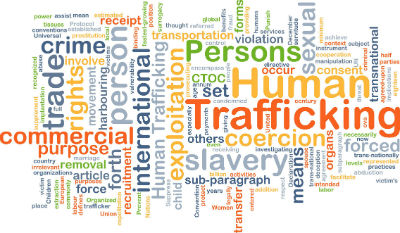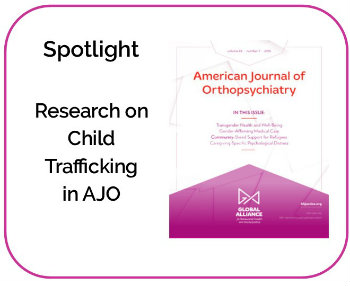Child Trafficking Prevention
 Child trafficking is a form of modern-day slavery. Although accurate data regarding trafficking are difficult to obtain, there are some things that we know about trafficking: Child trafficking is a form of modern-day slavery. Although accurate data regarding trafficking are difficult to obtain, there are some things that we know about trafficking:
- The International Labour Organization (ILO) estimates that there are 20.9 million victims globally.
- Of those, 68% are in forced labor, 26% are children, and 55% are women and girls.
- Factors that can make young people vulnerable to becoming trafficked or becoming traffickers, include poverty, family violence, exclusion, and migration.
- The drivers of human trafficking include poverty, social inequality and gender discrimination, inadequate education and opportunity, ethnic discrimination, and demand for cheap labor and cheap sex.
- The ILO estimates that human trafficking is a $150 billion industry.
Our Work on Human Trafficking
In 2016, the Global Alliance formed a task force to help discern how we can best support efforts to prevent human trafficking across the globe. The task force's accomplishments include:
- A resolution on child trafficking prevention, approved by our Board of Directors in 2017.
- A presentation of a framework for prevention of child trafficking at the Interdisciplinary Conference on Human Trafficking in September 2017.
- Serving on the panel of a Congressional Briefing, co-sponsored by the Global Alliance, focused on human trafficking prevention in November 2017. Access recordings of the panelists' presentations.
- Multiple presentations in 2018 and 2019 at the American Public Health Association (APHA) Annual Meetings.
The task force has also been working on a framework for preventing child trafficking at the community level. The framework is distinctive for its: (a) attention to the needs of both potential victims of trafficking and potential perpetrators of trafficking, (b) focus on understanding and preventing the circumstances that may contribute to becoming involved in child trafficking, either as a victim or as a perpetrator, and (c) use of principles to guide individuals, organizations, and communities in developing strategies to prevent and reduce trafficking. In a presentation at APHA in 2019, we presented a graphic depicting the key components of the framework:

 We have also published several articles that address human trafficking in our journal. These articles are featured in our Spotlight on child trafficking. We have also published several articles that address human trafficking in our journal. These articles are featured in our Spotlight on child trafficking.
Want to learn more?
What can you do?
|

 Child trafficking is a form of modern-day slavery. Although accurate data regarding trafficking are difficult to obtain, there are some things that we know about trafficking:
Child trafficking is a form of modern-day slavery. Although accurate data regarding trafficking are difficult to obtain, there are some things that we know about trafficking:
